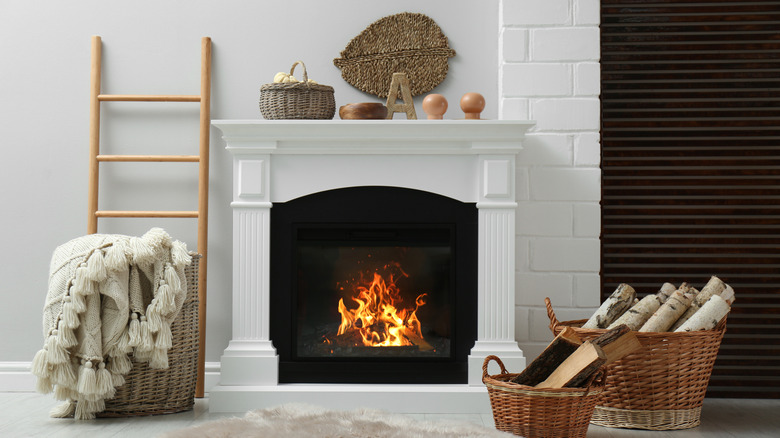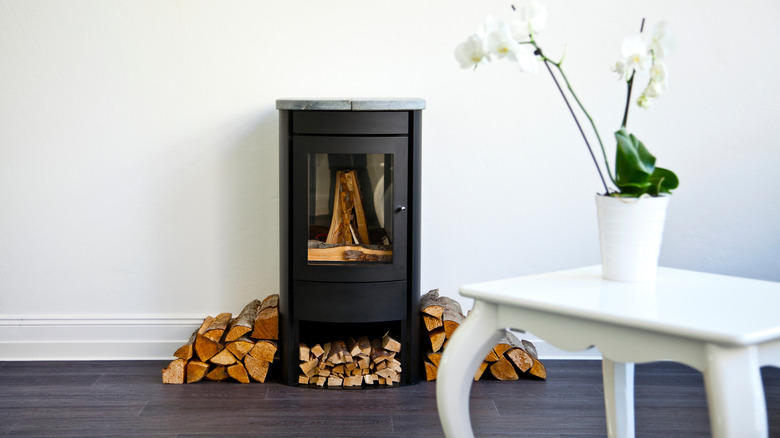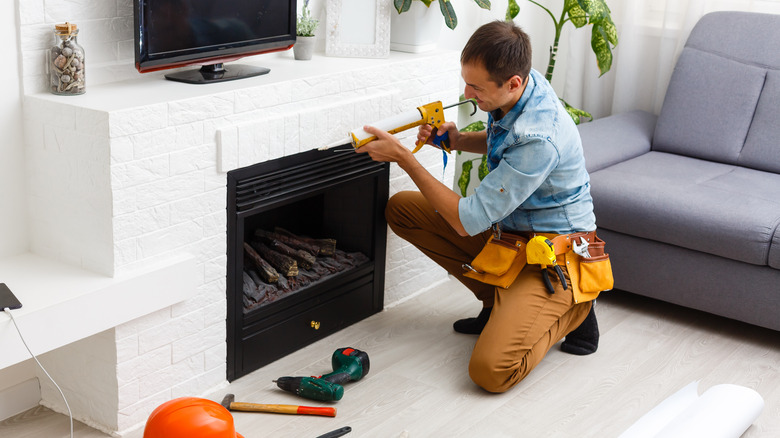Mistakes Everyone Makes When Buying A New Fireplace
Home projects can cost thousands of dollars and hours of your precious time. Once complete, it looks beautiful at the moment — but certain mistakes can lead to devastating consequences that'll make you regret even thinking of doing a home project. Usually, it's the materials installed that aren't properly being taken care of. For example, if stone is installed without properly sealing the natural material, it can discolor and soon turn into something completely different from what you bought, according to Granite Gold.
Other times, it's the fireplace. Homeowners make various mistakes when buying a new fireplace, and some of these mistakes are a result of how expensive this process usually is. The average cost to buy a new fireplace is around $2,415, but it can be as high as $5,600, according to HomeGuide. High prices can leave homeowners scrambling to save money elsewhere and sometimes make mistakes. Thankfully, you can avoid a few of these mistakes during the process of buying your fireplace.
Purchasing the incorrect configurations
FyrePro says that oftentimes homeowners select the incorrect fireplace for their desired functionality. Open-face fireplaces for burning wood are usually visually appealing and can complete your home design wonderfully. However, if you're looking for something to keep you warm — this fireplace won't do that for you. Closed combustion fireplaces, on the other hand, are similar to wood stoves and can keep your home warm. Then there is the gas fireplace and the choice of either vented or non-vented. A vented gas fireplace is more decorative, but heat is lost quickly as it's vented out. The non-vented option is better at containing the warmth in your home, but many local governments do not allow the installation of this option.
After choosing the right fireplace for your needs, it's then crucial to make sure you pick one that's the right size. Purchasing the incorrect size happens quite often and can be avoided by looking at the BTU, which is the size of space the fireplace is capable of warming up. Not every fireplace is going to fit into every home, so looking at the BTU of the fireplace helps determine which will work for your home.
Hire the right person for the job
DIY projects have been trending for a while now, but sometimes, you should allow professionals to do the more difficult and complicated tasks, according to Fyre Pro. Those who install a fireplace are typically trained and have plenty of past experience. After purchasing your fireplace, it wouldn't be wise to save money by either installing it yourself or hiring someone who isn't properly skilled at a lower cost.
This is also important because local codes must be met. Your installer should be knowledgeable of what the local codes are when installing the fireplace because you don't want to either be fined by the city or deal with a home fire down the line. There are different codes for different types of fireplaces, including wood-burning, vented gas, non-vented gas, coal, and pellet-burning fireplaces. Either you, as the homeowner, or the installer, must verify which codes must be met with your local government before installation even starts.


